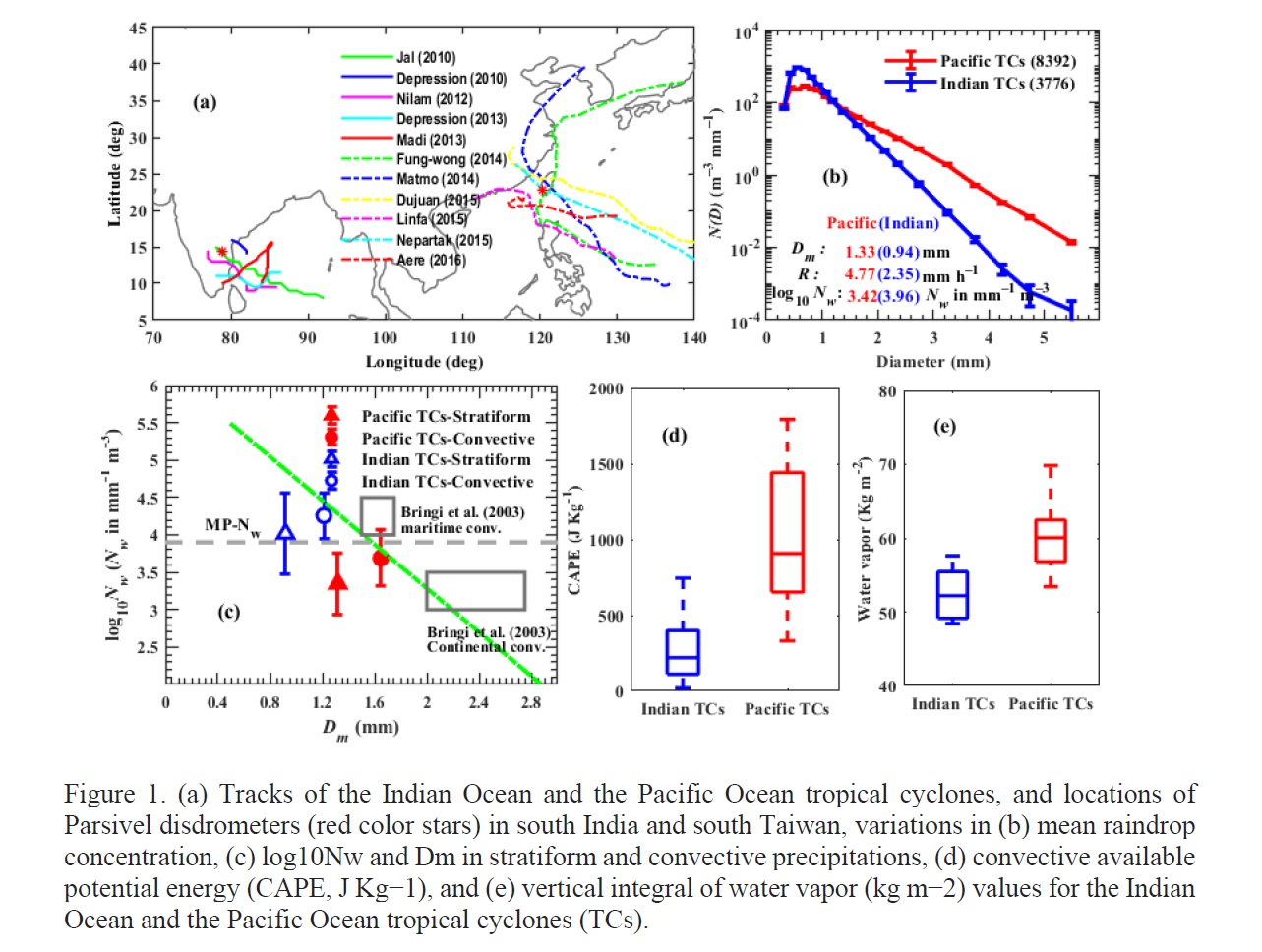Graphical Abstract
Jayalakshmi, J., B. K. Seela, P.-L. Lin, P. K. Wang, C.-H. Tseng, K. K. Reddy, H. Hashiguchi, L. Feng, S. K. Das, and C. K. Unnikrishnan, 2020: Raindrop size distribution characteristics of Indian and Pacific Ocean tropical cyclones observed at India and Taiwan sites. J. Meteor. Soc. Japan, 98, 299-317.
https://doi.org/10.2151/jmsj.2020-015
Graphical Abstract
Plain Language Summary:
For the first time, we investigated the raindrop size distribution (RSD) characteristics of the Indian Ocean and Pacific Ocean tropical cyclones (TCs) using ground-based Parsivel disdrometer measurements in south India and south Taiwan observational sites, respectively. Disdrometers observations show that the mid-size and large drops were more in number in the Pacific Ocean TCs than the Indian Ocean TCs, and these two oceanic TCs showed significant differences in RSD empirical relations (Dm-R, log10Nw-R, μ-Λ Dm-σm , log10Nw-Dm , and Z-R ). Relatively a higher convective activity and water vapor in the Pacific Ocean TCs than the Indian Ocean TCs resulted in distinct RSD features between the two oceanic TCs through different microphysical processes.
Highlights:
- For the first time, raindrop size distribution (RSD) features of the Indian Ocean and the Pacific Ocean tropical cyclones (TCs) are documented using ground-based disdrometers, remote sensing, and, reanalysis data sets.
- RSD stratified based on rainfall rate and precipitation types showed a large number of mid-size and large drops and less number of small drops in the Pacific Ocean TCs than the Indian Ocean TCs.
- Current study confirm that we must adopt TC-specific empirical relations in remote sensing and radar rainfall estimation algorithms.







